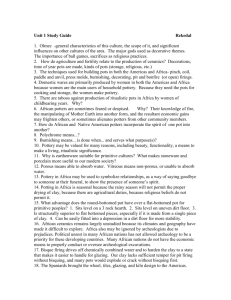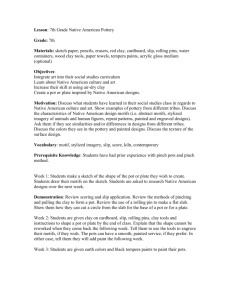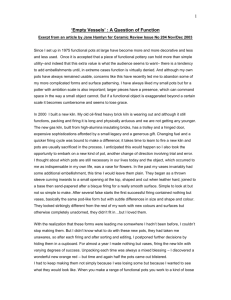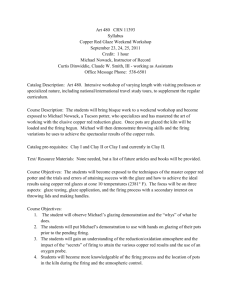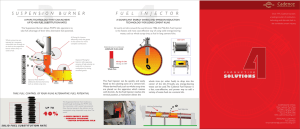Unit 2 Study Guide Rekedal
advertisement
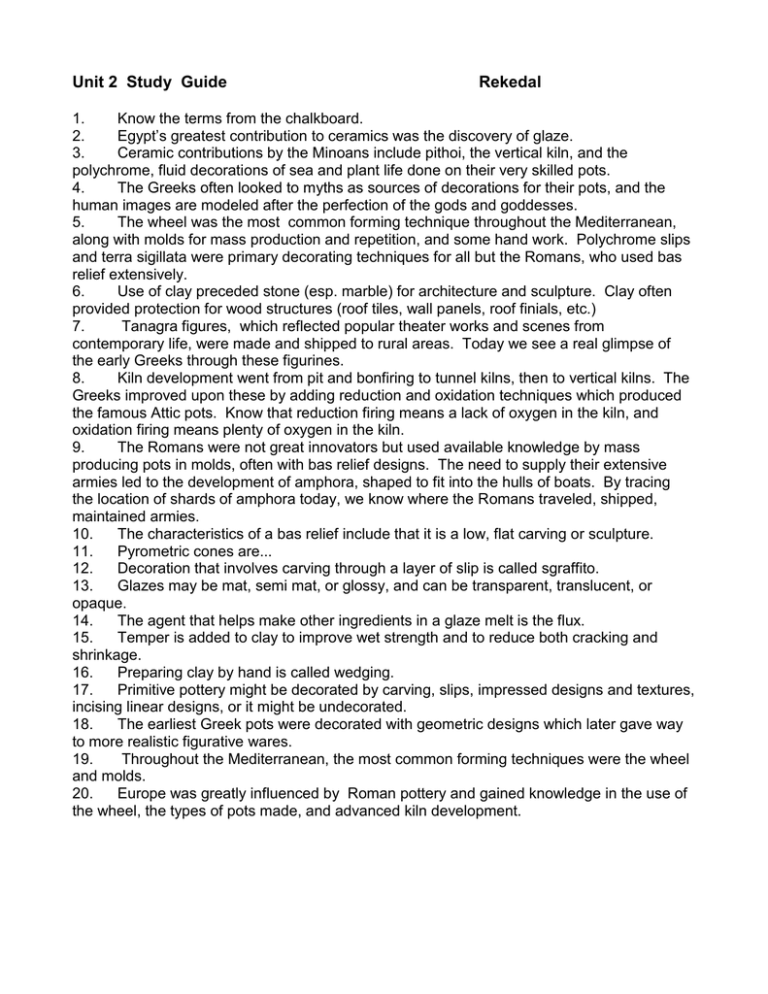
Unit 2 Study Guide Rekedal 1. Know the terms from the chalkboard. 2. Egypt’s greatest contribution to ceramics was the discovery of glaze. 3. Ceramic contributions by the Minoans include pithoi, the vertical kiln, and the polychrome, fluid decorations of sea and plant life done on their very skilled pots. 4. The Greeks often looked to myths as sources of decorations for their pots, and the human images are modeled after the perfection of the gods and goddesses. 5. The wheel was the most common forming technique throughout the Mediterranean, along with molds for mass production and repetition, and some hand work. Polychrome slips and terra sigillata were primary decorating techniques for all but the Romans, who used bas relief extensively. 6. Use of clay preceded stone (esp. marble) for architecture and sculpture. Clay often provided protection for wood structures (roof tiles, wall panels, roof finials, etc.) 7. Tanagra figures, which reflected popular theater works and scenes from contemporary life, were made and shipped to rural areas. Today we see a real glimpse of the early Greeks through these figurines. 8. Kiln development went from pit and bonfiring to tunnel kilns, then to vertical kilns. The Greeks improved upon these by adding reduction and oxidation techniques which produced the famous Attic pots. Know that reduction firing means a lack of oxygen in the kiln, and oxidation firing means plenty of oxygen in the kiln. 9. The Romans were not great innovators but used available knowledge by mass producing pots in molds, often with bas relief designs. The need to supply their extensive armies led to the development of amphora, shaped to fit into the hulls of boats. By tracing the location of shards of amphora today, we know where the Romans traveled, shipped, maintained armies. 10. The characteristics of a bas relief include that it is a low, flat carving or sculpture. 11. Pyrometric cones are... 12. Decoration that involves carving through a layer of slip is called sgraffito. 13. Glazes may be mat, semi mat, or glossy, and can be transparent, translucent, or opaque. 14. The agent that helps make other ingredients in a glaze melt is the flux. 15. Temper is added to clay to improve wet strength and to reduce both cracking and shrinkage. 16. Preparing clay by hand is called wedging. 17. Primitive pottery might be decorated by carving, slips, impressed designs and textures, incising linear designs, or it might be undecorated. 18. The earliest Greek pots were decorated with geometric designs which later gave way to more realistic figurative wares. 19. Throughout the Mediterranean, the most common forming techniques were the wheel and molds. 20. Europe was greatly influenced by Roman pottery and gained knowledge in the use of the wheel, the types of pots made, and advanced kiln development.

